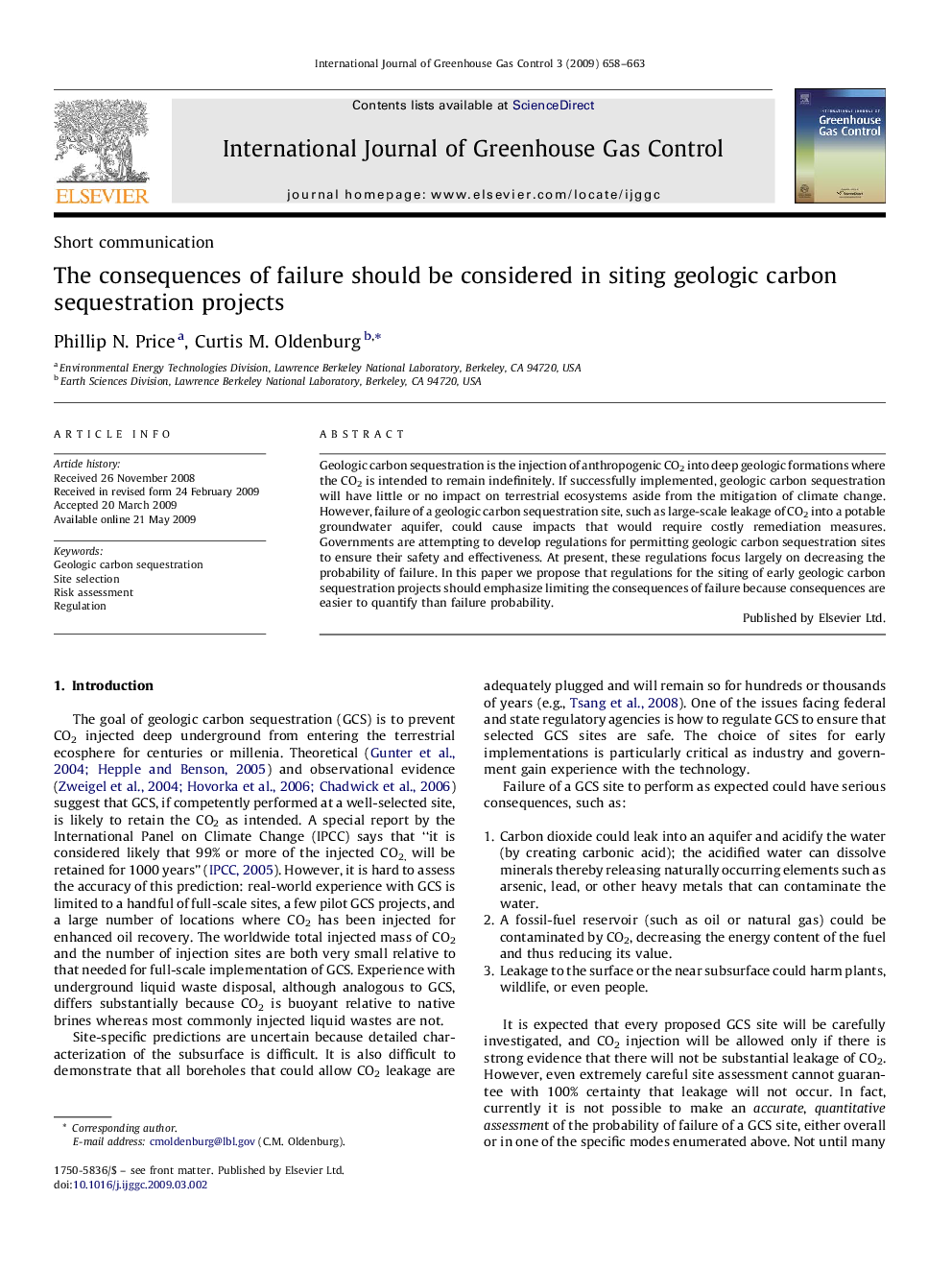| کد مقاله | کد نشریه | سال انتشار | مقاله انگلیسی | نسخه تمام متن |
|---|---|---|---|---|
| 1743816 | 1522032 | 2009 | 6 صفحه PDF | دانلود رایگان |

Geologic carbon sequestration is the injection of anthropogenic CO2 into deep geologic formations where the CO2 is intended to remain indefinitely. If successfully implemented, geologic carbon sequestration will have little or no impact on terrestrial ecosystems aside from the mitigation of climate change. However, failure of a geologic carbon sequestration site, such as large-scale leakage of CO2 into a potable groundwater aquifer, could cause impacts that would require costly remediation measures. Governments are attempting to develop regulations for permitting geologic carbon sequestration sites to ensure their safety and effectiveness. At present, these regulations focus largely on decreasing the probability of failure. In this paper we propose that regulations for the siting of early geologic carbon sequestration projects should emphasize limiting the consequences of failure because consequences are easier to quantify than failure probability.
Journal: International Journal of Greenhouse Gas Control - Volume 3, Issue 5, September 2009, Pages 658–663